Cucumber Beetle is the main ‘pest’ insect that reduces our harvests of cucurbits, from summer to winter squash, melons to cucumbers. They are beautiful as well as devastating! There’s good news and bad; here is a little more biology to help understand their lifecycle as well as 4 keys to thwarting them in your garden for seasons to come.
Biology + Bad News: Cucumber Beetles
With long, narrow and lemon yellow with black stripes (and occasionally spots), Cucumber beetles feed on every part of your cucurbits, though the real danger is the bacterial wilt they vector that often significantly decreases and even destroys your abundance. Here in Zone 5 they have two 8-week lifecycles each season, overwintering as adults in the vines that remain in your garden. In mid/late June they emerge and lay eggs at the base of any cucurbit they find, where the larvae quietly munch on the roots and subsequent adults enjoy every other part of the plant, from stem to stigma.
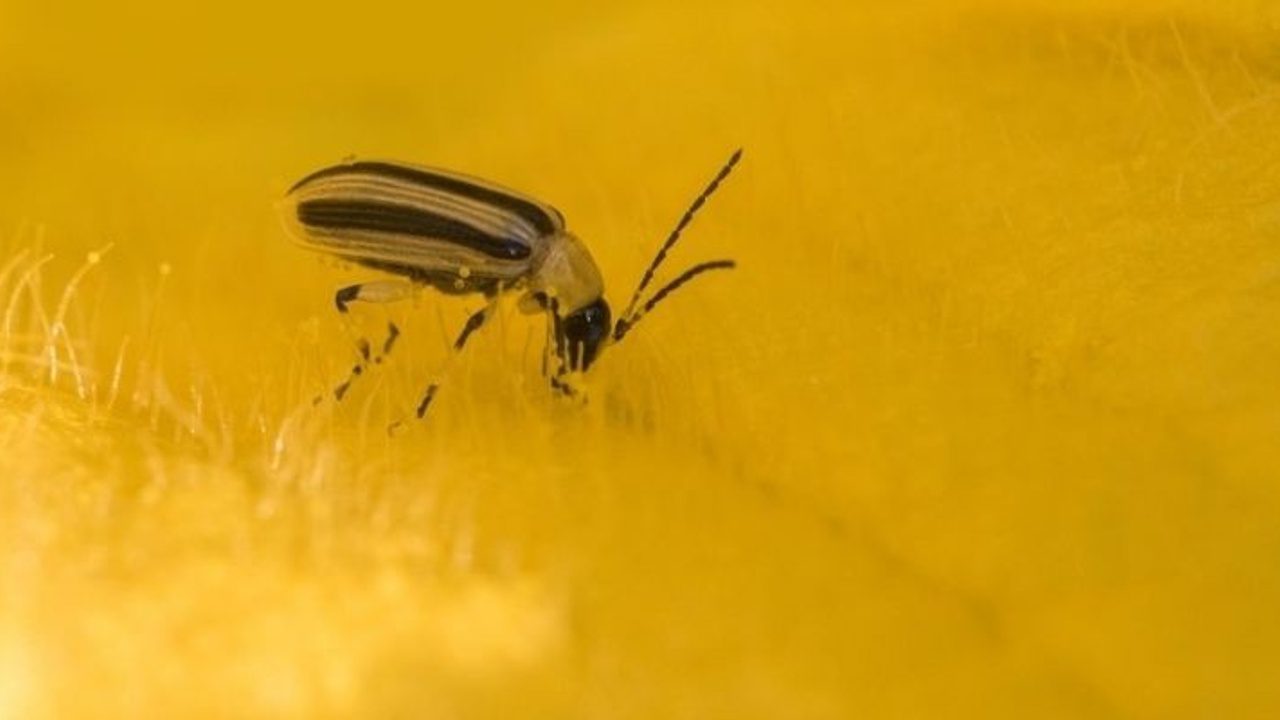
4 Keys to Thwarting Cucumber Beetles:
1. Clean your garden’s cucurbit vines each season, preventing adult beetles from overwintering directly in your garden. If your compost is within 100 feet of where you plan to grow cucurbits next season, consider taking them farther away.
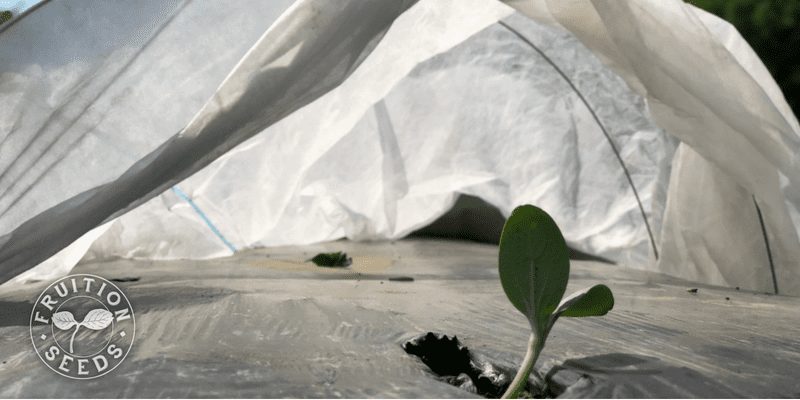
2. Cover your cucurbits with hoops and floating row cover as soon as you sow or transplant is a great way to organically protect your plants from roving Cucumber beetles. It’s critical to fully weight the edges of your row cover: Cucumber beetles are small and committed to finding their way in, so make it hard for them, Friends! We prefer the weight of smooth edges rather than rocks to weight our row cover, helping the row cover last that much longer. Here are our go-to sandbags that we’ve used for a decade! Remove the row cover only to weed and be sure to remove the cover as soon as they flower so pollination isn’t hindered. As soon as you remove the row cover, cucumber beetles may come swarming in but the full-sized plants will be resilient enough to mature fruit abundantly nonetheless.
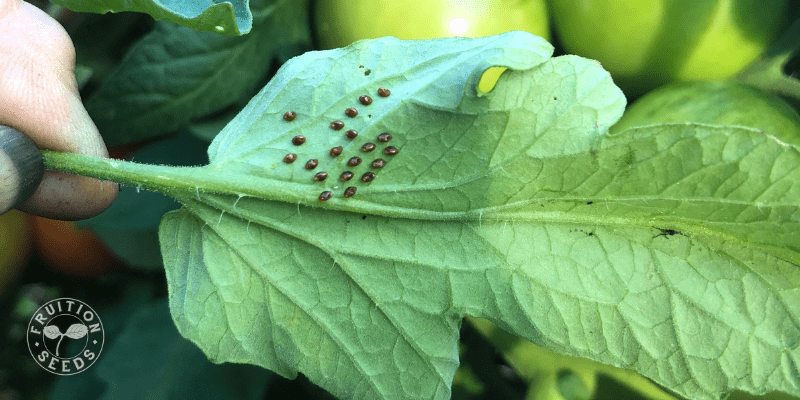
Cucumber Beetle eggs laid in a grid-like pattern
3. Most critically, squish any Cucumber beetles you see! Scout for their eggs, as well. Like copper blueberry seeds, Cucumber beetle eggs are laid on the undersides of cucurbit leaves in a grid of often 20 to 40 eggs. Gray squash bug eggs look similar, though each egg is a cluster, as below. Squish both!
Gray squash bug eggs in a cluster… squish, as well!
4. As a last resort, there are organic options for spraying, though we recommend them as a final resort. Natural pyrethrins are toxic to Cucumber beetles and can be found abundantly in oxeye daisies! Blend flowers and water, one part flowers to two parts water, filter and spray as much of the plants as possible, especially on the undersides of your leaves and at the stem base. Pyganic is an organic-approved product available, as well.
And Now for the Good News
Cucumber beetles are challenging to thwart, without doubt. Fingers crossed for us all! The good news is this: If we can keep Cucumber beetles at bay until our cucurbits flower, they’re often resilient enough to surround us with abundant fruit, nonetheless. And Friends, you’re not alone! Cucumber beetles are impressively ubiquitous and excellent at what they do, so we’re all in this together.
Sow Seeds & Sing Songs,

and the Many Beings of Fruition

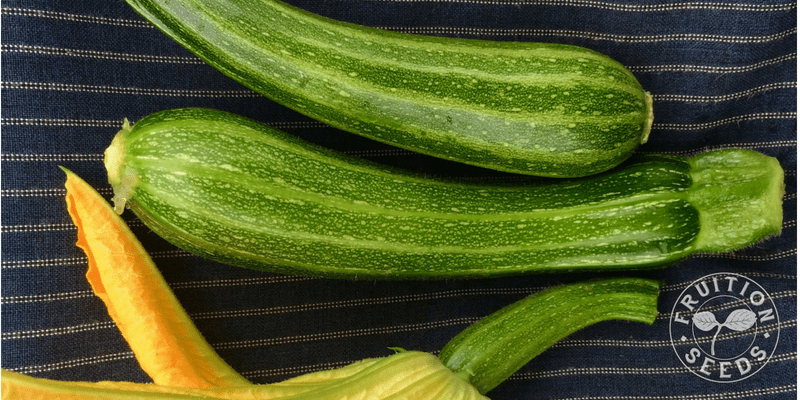
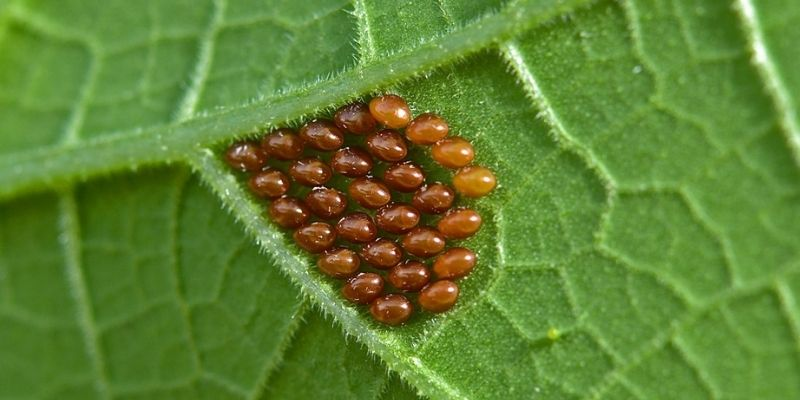
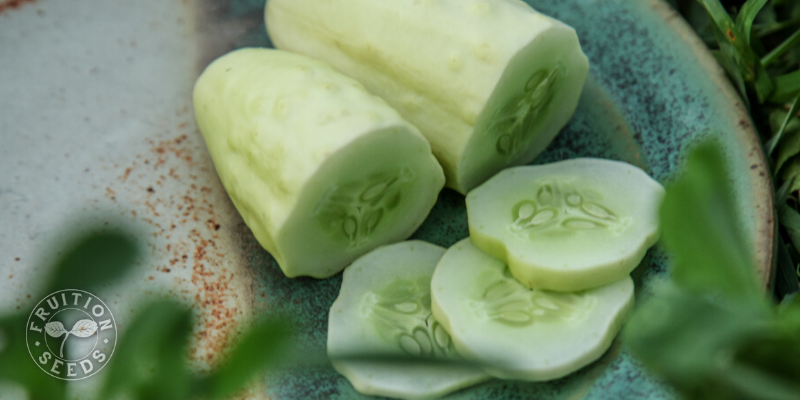
Would planting these daisies with cucumbers be an option? Just a thought as I read through the last line
Thanks!
Having daisies around is always a grand notion, though the concentration of natural pyrethrums in living, swaying in the breeze daisies is far less than any threshold to deter cucumber beetles, sigh! Thank you for asking Mara~
This is informative and encouraging, unlike the multiple fatalistic defeatist articles I’ve read. Thank you.
Thanks for your advice. Last year I had a new field thanks to our tornado so I planted cucumbers Zucchini squash and a LOT of dahlias. When I found my first cucumber beetle I thought, what a pretty beetle and let it go. Later I hunted online for the cause of bite tracks on my cucumbers… bummer! And they like Dahlias too.
How about diatomaceous earth? They seem to deter flea beetles.
Is there any percentage in trapping them (yellow buckets of soapy water) or is that likely to drown just as many good bugs as bad?
Hi Virginia, feel free to try it out and let us know your findings. Wishing you abundance! Melissa <3
Apparently you can release beneficial nematodes in the spring or fall, and this will reduce the initial amount of cucumber beetles that emerge, as the nematodes are soil dwelling predators. Two websites to buy them: arbico-organics and NIC (natural insect control).
Hi Virginia,
Thanks for sharing!
Melissa